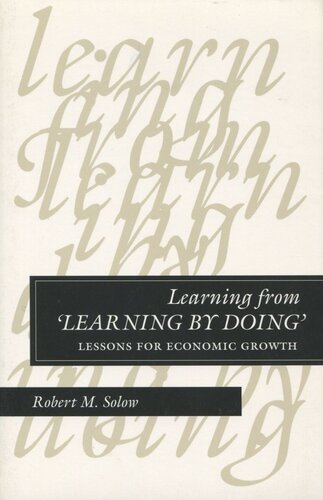

Most ebook files are in PDF format, so you can easily read them using various software such as Foxit Reader or directly on the Google Chrome browser.
Some ebook files are released by publishers in other formats such as .awz, .mobi, .epub, .fb2, etc. You may need to install specific software to read these formats on mobile/PC, such as Calibre.
Please read the tutorial at this link: https://ebookbell.com/faq
We offer FREE conversion to the popular formats you request; however, this may take some time. Therefore, right after payment, please email us, and we will try to provide the service as quickly as possible.
For some exceptional file formats or broken links (if any), please refrain from opening any disputes. Instead, email us first, and we will try to assist within a maximum of 6 hours.
EbookBell Team

4.7
66 reviewsThis book by a Nobel laureate in economics begins with a brief exposition of Kenneth J. Arrow's classic paper "The Economic Implications of Learning by Doing" (1962). It shows how Arrow's idea fits into the modern theory of economic growth, and uses it as a springboard for a critical consideration of spectacular recent developments that have made growth theory a dynamic topic today. The author then develops a new theory that combines learning by doing (identifying it with the concept of "continuous improvement") with a separate process of discrete "innovations." Learning by doing leads to a fairly smooth reduction in labor required per unit of output, tied to the rate of gross investment in new capital equipment. Innovations arrive at random; when one of them happens, the labor requirement takes a jump downward. This new model, simple as it is, does not lend itself to self-contained solution. The author accordingly presents the results of a series of computer simulations that exhibit the variety of paths the new model economy can follow, showing, among other things, that early good luck can have a persistent effect. The book concludes with some general reflections on policies for economic growth, drawn not from any one modeling exercise but from general experience with a variety of growth models. Of the four chapters of this book, the first two were presented as the Kenneth J. Arrow Lectures at Stanford University in 1993. The computer simulations were specially done for inclusion in this book. The final chapter on policies for economic growth was first presented as the Ernest Sturc Lecture at the Johns Hopkins School of Advanced International Studies in Washington in 1991.